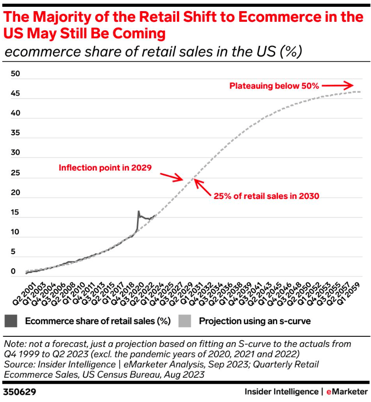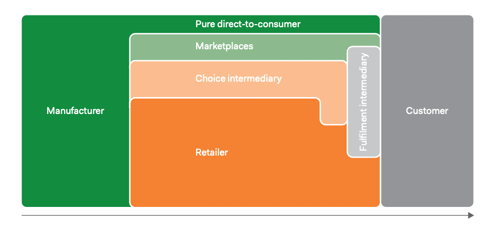Press Release - Orderchamp launches new Dropshipping solution
Orderchamp launched: Dropshipping by Orderchamp. Retailers can add premium items to their webshop without any inventory cost.
The retailer is in full control, enabling them to decide which items to keep in stock through Orderchamp Purchasing and which items to have shipped directly from brands to customers via automated integrations with Orderchamp Dropshipping.
From the Silk Road's ancient caravans to sailors navigating the global waters, we've always been merchants. However, the retail landscape, which has been part of the human story for millennia, has undergone a seismic shift in the last 25 years. The main contributor: the digital economy! At Orderchamp, we understand that being a merchant in the 21st century presents a unique set of challenges. That’s why our core mission is to empower independent retailers and brands to succeed in tomorrow’s market. But what will tomorrow’s market look like? And how can retailers and brands adapt in this changing environment?
The rise of digital channels has ushered in an era of boundless possibilities for retailers and brand owners. They can choose to sell in brick-and-mortar stores, through e-commerce websites, via social media, or on various online platforms. They can opt for distributor networks or go direct-to-consumer, or combine many different sales and distribution channels. These many choices present both opportunities and challenges. Small and medium-sized business owners find themselves caught in decision-paralysis, while larger enterprises venture into unfamiliar territories, often plagued by inefficiencies caused by traditional systems. Some succeed, but many actually still struggle to deliver optimal results.
Apart from this landscape of options, the COVID-19 pandemic temporarily accelerated the shift towards online shopping, but it also reminded us of the importance of physical experiences and immediate satisfaction. So, how do we envision retail channels taking shape in the years to come?
First and foremost: physical and local retail are here to stay! Many sources highlight that digital retail will continue its upward trajectory in the coming years, there’s little doubt about this. However, physical sales will remain the majority of retail for the foreseeable future, with online and offline channels eventually forming a close relationship. Recent projections suggest that digital retail will eventually plateau at ~50% of total retail volume, coexisting harmoniously with traditional brick-and-mortar stores.

Chart: S-curve projection on online share of retail in the US (expected similar for the EU) (source: eMarketer)
The future, therefore, belongs to innovative retailers who seamlessly meld traditional and digital capabilities, offering customers unprecedented control and flexibility in their shopping experiences. Stores will evolve from sales outlets into marketing assets, and vice versa, realising their full potential. It doesn’t mean every physical retailer needs to run a complex ecommerce operation with order fulfilment, but it means they will have to incorporate digital solutions into their operations, such as social media selling, digital supplier relationship management, or omnichannel marketing campaigns. Similarly, online stores and brands are increasingly embracing the physical, either by opening their own outlets or partnering with existing offline retailers to deliver consumers the physical purchasing experience.
That brings us to wholesale trade – our cup of tea – which will have to undergo a further transformation. Why? Because the blend of online and offline sales will have an impact on how retailers will want to stock up for their goods.
The traditional model of wholesale is clear: a) the retailer buys goods to stock large amounts of inventory (benefitting from the wholesale pricing, but taking large inventory risk); b) the retailer sells items to consumers over time, emptying the purchased inventory and restocking if needed. Our belief is that this model will always persist for physical retail outlets aiming to showcase items for experience & instant pick-up, and for high-volume online retailers seeking to maximise margins.
However, the concept of first buying items to stock inventory and then selling them to consumers is more risky than ever given the rise of all the different (digital) channels consumers can buy similar goods at. Furthermore, it may not best suit the logistics demands of digital sales channels and their associated costs. A significant shift is underway to address these challenges.
For premium retailers and brands in categories like home, kids, kitchen, fashion, jewellery, and accessories, the "inventory-light" approach is taking centre stage. What does this mean? In general, all types of retailers will continue to stock goods for immediate satisfaction, fitting, and experiential value. But, for products beyond these limited needs, a new era of "digital ordering" will further emerge, mostly known as dropshipping. What does this mean? In short, retailers can have direct access to inventory of their suppliers and can sell products from those suppliers without purchasing (significant) quantities of those products in advance. When a product is sold by the retailer, the supplier will ship it directly to the retailer’s customer, meaning the retailer never takes hold of the physical product themselves.
Physical retailers will always need physical goods, but the inventory-light model will be more accessible to them going forward. Imagine a world where a retailer only has limited stock per item in store for display or low volume purchases, but has unlimited “virtual inventory” for all quantities or variants of a product - Have a customer looking for that vase in red but only blue is in the store? Or a customer looking for 6 dining chairs but only 1 in stock? They can order the needed variants or quantities directly in the store or online, which are shipped directly to the customer’s house, to the store for pick-up or anywhere in between, by the supplier to save time and costs.
To be clear, some larger retailers have already been working in this way for years, but even for them it was very manual, including paperwork, binders and printed catalogues. With new technology, “virtual inventory” can now be integrated into tablets or directly into the POS, giving retailers access to the inventory of suppliers without pre-purchasing physical products. These “instant backorders”, facilitated by the original sellers, will be dispatched efficiently and at low cost.
Online retailers, on the other hand, will be able to test new categories and add complementary items in their webshop - all through real-time inventory integration with top brands. They will go beyond offering core products in their assortment, which follow the traditional wholesale purchasing model, and add items which are not ‘in stock’. This will enable limitless inventory options with zero risk, all delivered directly through the brand's fulfilment service. Some of the largest online players are already adopting this approach via the ‘marketplace business model’. New dropshipping solutions allow smaller and medium-sized online stores, and even direct-to-consumer brands, to transform into "niche marketplaces", e.g., in a specific vertical like beauty, home & kids, building on their existing communities. By adding new, complementary product ranges and categories, online retailers will maximise the sales potential with every visitor and increase total revenue. The best part: it will all be automated!
Lastly, brands and manufacturers are breaking free from their full reliance on resellers standalone. They've armed themselves with diverse possibilities, embracing direct-to-consumer models, which allows them to service retailers with the virtual inventory model. Some have faced setbacks, while others have triumphed. In the end, the market is inevitably moving in this direction, prompting these wholesalers and distributors to prepare by implementing new software systems and exploring novel services.

Image: manufacturers and wholesalers have many options these days (source: Oliver Wymann)
What is fueling this retail revolution? Supply chain innovation. Over the past decade, logistical channels have matured, enabling lightning-fast deliveries within days or even hours. Many fulfilment providers have complemented their services in recent years, allowing every traditional wholesaler or even manufacturer to deliver items in all sizes, cross-border and at every interval.
Next to that, today, everyone is a ‘shipper’ and a ‘receiver’. Whether it's buying/selling goods on P2P second-hand platforms or managing returns through local depots, we’re all accepting new forms of delivery and acceptable lead times. We've begun distinguishing between fast goods and experience goods, which thereby determine if the item is picked-up or ordered online, and we’ve all realised that some items are much better delivered directly (e.g. larger furniture).
The need for excessive inventory is becoming a relic of the past, as new delivery standards maintain the customer experience. Collaboration and innovation have become the norm, thanks to our well-established logistical networks.
The future of retail is a thrilling blend of tradition and innovation, where the imagination knows no bounds, and the possibilities are as vast as the digital realm itself. As we embark on this exciting journey, one thing is clear: the future of retail promises innovation, opportunity, and promising steps ahead.
At Orderchamp, we started out with our wholesale marketplace to empower independent retailers to access top-notch premium brands at low minimum order amounts and the best wholesale conditions. We’re taking that mission to the next level with the recent launch of our new first-in-class dropshipping solution, Dropshipping by Orderchamp, adding a risk-free wholesale component to our offering.
This empowers any retailer to be in full control, enabling them to decide which items to keep in stock through Orderchamp Purchasing and which items to have shipped directly from brands to customers via automated integrations with Orderchamp Dropshipping.
With instant access to hundreds of premium brands, retailers can now easily increase their sales by expanding their product catalogue without investing in inventory. Our high quality brands ensure five-star conditions: fast delivery, great support and high margins. As the trusted wholesale partner of these brands, Orderchamp ensures a smooth operational process between the retailer and the brand.
We have one clear goal with this solution: help retailers save time, grow revenue and reduce risk.
Our seamless platform, premium brands, fast delivery and automated processes will revolutionise your wholesale experience.
Orderchamp launched: Dropshipping by Orderchamp. Retailers can add premium items to their webshop without any inventory cost.
Are you struggling to overcome the challenge of minimum order values on the Orderchamp wholesale marketplace? Discover creative solutions and...
Revolutionise wholesale with Dropshipping by Orderchamp. Say goodbye to inventory risk and hello to profit-boosting solutions.
Empowering independent retailers and brands with technological solutions to succeed in tomorrow's market.